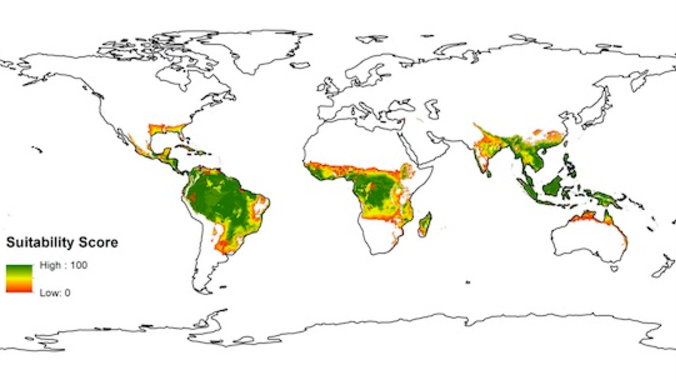
For centuries, ʻulu (breadfruit) has served as a major staple food in the Pacific Islands, and starting 200 years ago has spread widely across the global tropics. Lauded as a crop that could potentially transform tropical agriculture and address global hunger, ʻulu has high productivity, an excellent nutritional profile and is a long-lived tree.
A study from the University of Hawaiʻi at Manoa’s College of Tropical Agriculture and Human Resources (CTAHR) gives another reason for ʻulu’s promising future: an expanding habitat suitable under climate-change scenarios over the next 50 years.
The study uses Hawaiʻi as a model system for understanding climate-change dynamics, using the high variation in temperature, rainfall and soils to calibrate a model that shows high accuracy of predicting breadfruit production potential.

“More than 2,000 trees in the state were mapped to develop habitat parameters for breadfruit, which were then expanded using production data from another 50 or so sites,” said Assistant Researcher Noa Lincoln, who manages the Indigenous Cropping Systems laboratory. “The model was then applied globally and to future climate-change scenarios to examine how things might play out in the future.”
PhD student Kalisi Mausio, the paper’s primary author, believes her model shows high stability, meaning those places where ʻulu currently grows will not decline in suitability in the future. Under intense climate-change scenarios, breadfruit shows nearly a 100-percent increase in habitat suitability, expanding the potentially cultivable areas by some 7.5 billion acres.
“It’s great to have the data to support what indigenous Oceanic cultures intuitively knew about breadfruit’s resilience, evidenced by the far-reaching extent of the tree’s migration and cultivation across the Pacific,” Mausio said.
“Cultivation potential projections of breadfruit (Artocarpus altilis) under climate change scenarios using an empirically validated suitability model calibrated in Hawaiʻi” was published in the May 22 edition of the journal PLoS One.
Read the full story at CTAHR’s website.


